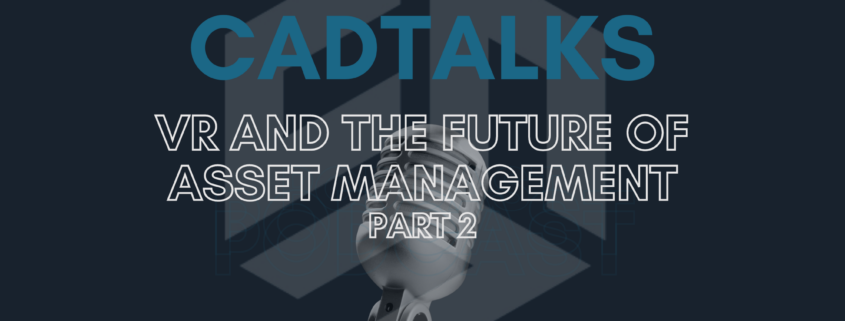CADTalks: Virtual Reality and the Future of Asset Management part 2
In our previous blog post, we delved into the insightful discussion from the first half of our recent CADTalks episode, where Chiara Delmonte and Andrea Carpi explored the transformative potential of Virtual Reality (VR) in asset-heavy industries.
They discussed how VR can enhance training, improve design processes, and facilitate better decision-making.
In this follow-up, we’ll cover the highlights from the second half of the episode, focusing on practical demonstrations and real-world applications of VR technology in industrial settings.
Immersive VR Experiences for Training and Simulation
During the second half of the CADTalks episode, Chiara Delmonte and Andrea Carpi provided a hands-on demonstration of VR technology, showcasing its capabilities for immersive training and simulation. Andrea Carpi guided Chiara Delmonte through various VR scenarios, illustrating how VR headsets can be used to simulate real-world environments and tasks.
This interactive experience highlighted the precision and control that VR offers, making it an invaluable tool for training maintenance engineers, conducting virtual inspections, and performing simulations.
Andrea Carpi demonstrated the versatility of VR by explaining how it can be used for virtual tours and training sessions. For instance, maintenance engineers can be trained in a virtual environment, where they can practice operations without the risks associated with on-site training. This approach not only enhances safety but also ensures that engineers are well-prepared for real-world tasks.
Enhancing Knowledge Retention with VR
One of the critical points discussed was the role of VR in addressing knowledge retention issues. As the workforce evolves and experienced employees retire, companies face the challenge of preserving valuable knowledge.
VR offers a solution by capturing and storing this knowledge in an interactive format that can be accessed indefinitely. This ensures that new employees can learn from the expertise of their predecessors, maintaining a high level of competency within the organization.
Chiara Delmonte emphasized how VR can be a game-changer in preserving institutional knowledge. By creating virtual training modules and simulations, companies can ensure that crucial skills and procedures are documented and passed down seamlessly to new hires. This not only aids in knowledge retention but also accelerates the onboarding process for new employees.
Practical Applications and Future Prospects
Andrea Carpi and Chiara Delmonte also discussed the practical applications of VR in various industrial sectors. They highlighted its potential for virtual inspections, where engineers can remotely assess the condition of equipment and infrastructure. This capability is particularly useful in hazardous environments or locations that are difficult to access.
Furthermore, Andrea Carpi mentioned the cost-effectiveness of VR technology, noting that companies don’t need to invest in the latest models to reap its benefits. Even with standard VR headsets, businesses can create highly effective training programs and simulations.
The conversation concluded with a teaser for the next episode, where they plan to explore the capabilities of HoloLens, another cutting-edge technology in the field of augmented and virtual reality. This upcoming discussion promises to provide further insights into how these technologies can be integrated to enhance industrial operations.
Leveraging Virtual Reality in Industrial Applications
Ultimately, we believe in harnessing the power of innovative technologies like VR to drive industrial advancements.
The discussions in CADTalks highlight how VR can redefine training, improve knowledge retention, and enhance operational efficiency. Companies can truly stay ahead of the curve and maintain a competitive edge by integrating these technologies.
For more information on how VR and other advanced technologies can benefit your business, contact us, and let’s discuss how we can transform your operations and achieve new levels of efficiency and innovation.





